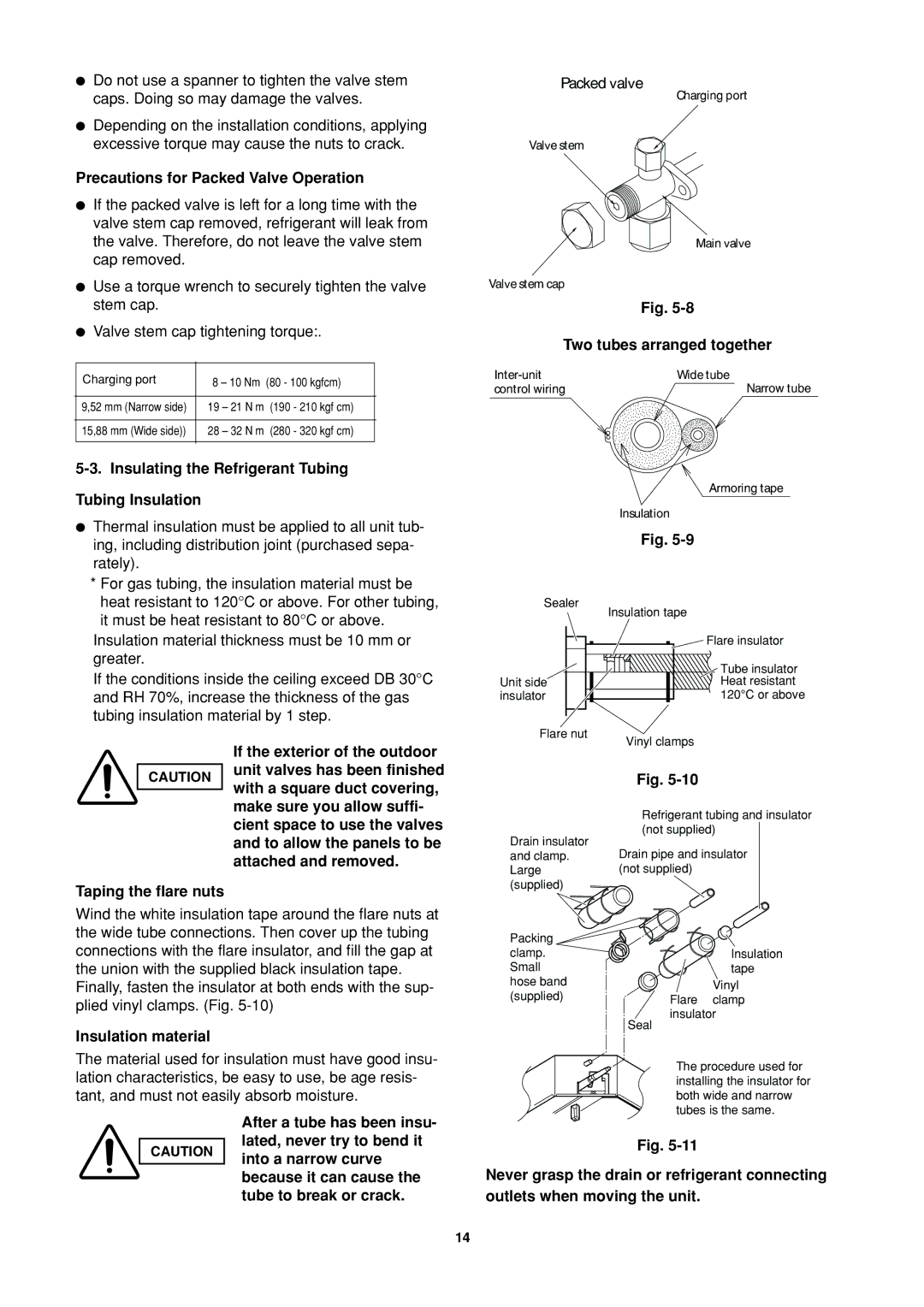R410A specifications
Sanyo R410A is a refrigerant blend that has gained popularity in air conditioning and refrigeration systems due to its efficiency and environmental benefits. Comprised of two main components, difluoromethane (R-32) and pentafluoroethane (R-125), R410A is categorized as an HFC (hydrofluorocarbon) refrigerant. One of its main advantages is its zero ozone depletion potential, making it an eco-friendly alternative to older refrigerants like R22, which are being phased out due to their harmful effects on the ozone layer.One of the key features of Sanyo R410A is its high efficiency, which translates to lower energy consumption in air conditioning applications. The thermodynamic properties of R410A allow for higher cooling capacity and reduced energy input, yielding higher seasonal energy efficiency ratios (SEER) compared to R22 systems. This efficiency is not just beneficial for users looking to save on energy bills, but it also contributes to a reduced carbon footprint.
The blend's higher pressure capabilities allow manufacturers to design more compact and lightweight systems, which can lead to better utilization of space in residential and commercial settings. These space-saving designs are often equipped with advanced technologies such as inverter-driven compressors, which adjust their operating speed based on the cooling demand, further enhancing system efficiency.
Sanyo R410A also features excellent thermal properties, providing effective cooling performance across a range of ambient temperatures. The refrigerant has a lower volatility compared to older alternatives, which contributes to improved system stability and reliability over time. Additionally, R410A does not contribute to global warming to the extent of previous refrigerants, although its global warming potential is still a consideration for the future.
Among its technological advancements, Sanyo R410A enables the use of innovative HVAC systems that employ enhanced heat exchange methods. These systems often include microchannel coils that improve heat transfer efficiency while reducing refrigerant charge. The compatibility of R410A with various components allows manufacturers to push the boundaries of design and functionality in climate control systems.
In conclusion, Sanyo R410A stands out due to its exceptional efficiency, environmentally friendly characteristics, and compatibility with advanced technologies. As the HVAC industry continues to evolve, R410A's features and properties position it as a reliable choice for modern air conditioning and refrigeration applications. Its adoption marks a significant step towards achieving greater energy efficiency and sustainability in climate control solutions.

